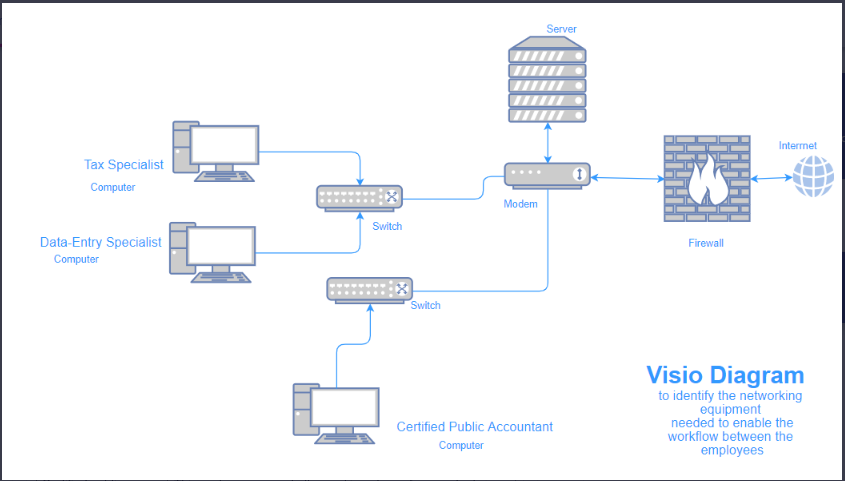Introduction
It is vibrant to highlight that the hardware is the most apparent component of any data organization. Computers, scanning, and printers are examples of such technology, primarily used to acquire data, change it, and then give it to the users as output. Various inputs allow the systems to function correctly, such as the game controllers utilized, which vary depending on the facts provided to the system. The number of occasions the data is input into the computer and the type of personnel in charge of the operation. For example, it would be far more effective if the page was scanned rather than written. Input devices are helpful, primarily in converting non-digital data types into digital formats that computers can handle.
Discussion
The physical pieces of a computer are referred to as components. They consist of the screen, motherboard, mouse, peripheral devices, CPUs, hard drives, and laptop ports. The constituents are essentially computer pieces that can be seen or touched substantially, and each has its unique purpose that allows the computer to perform efficiently. Much information is still entered using a keyboard (Jayawardena, 2021). Pointing peripherals, such as the mouse, are also required for instant usage with the interface. It aids in guiding the pointer to the action that the user desires.
Optical scan, on the other hand, emits well-lit devices that generally replicate their light on the paper, determining the size and dimness of the motifs that are accessible on the paper. They are typically cast off with desktop PCs to scan pictures. There is also the central processing unit, which serves as the computer’s mind and is in charge of captivating commands from software one at a time. This enables them to employ them to input information, which is subsequently transformed into yield data. The motherboard, which houses all major computer equipment such as the auxiliary ports, hard disk, memory, and CPU, is another piece of hardware (Jayawardena, 2021).
As a result, the motherboard may be considered the backbone of all gadgets, such as laptops, phones, cameras, and monitors. The processor is another crucial component since it can change stored data in the computer hard drive and can be relied on to pass on instructions effectively. It is also vital to know that the greater the promptness, the more efficient the CPU.
The hard disks contain documentation and applications. The drives also rotate beneath the magnetic arm, allowing information to be stored or read. The new hard drives employ electrical components to stock and read data, making them efficient. These are the hardware and software for James Otis Tax Associates’ professionals (Jayawardena, 2021). As a result, in the scenario of James Otis Tax Associates, the credentialed accountant will require financial management practices. Accounting knowledge systems are a structure that a corporation can use to gather, store, handle, process, collect, and report its accounting transactions. This is to make sure that accounting professionals, consultants, industry experts, managers, chief financial officers (CFOs), auditors, regulatory agencies, and chartered accountants can use it.
Software
Certified Public Accountant
Certified accountants collaborate to ensure the most critical precision in the company’s financial performance. Operations and record-keeping are simplified, but data integrity and security are maintained. People, processes, instructions, data, applications, infrastructure for information technology, and internal controls are all part of it—a database structure, such as object-oriented programming, stores information in the system. The software employed in this system is used for storing, retrieving, processing, and evaluating the firm’s financial information. It may also be tailored to fit the specific requirements of various sorts of enterprises. Sage, Freshbooks, Sage 50 Cloud, Zoho, and Gusto are some more software applications that accountants can utilize. The system employs data encryption, periodic password changes, and benign and secure off-site preservation through backups as a safety precaution.
Tax Specialist
The tax professional can employ the alpha tax software program, an entire company tax conformity device that provides exactness, convenience, and regulation over the whole tax collection procedure. It has automatic fact-gathering tools, strong tax logic, built-in cross-references, a thorough appraisal trajectory, and legislatively up-to-date support. It can compute and electronically file completely iXBRL-compliant tax records and calculations (Jayawardena, 2021). It improves exactness, transparency, regulation, and cost-cutting. Another software that tax specialists might use is Drake Accounting, which aids in the preparation of client write-ups as well as payroll returns. The project’s security may be ensured by employing anti-virus programs and firewalls.
Data-Entry Specialist
For data entry specialists, software such as Ninox, a cloud-based input resolution utilized by small and medium businesses, should be used. The answer aids with the growth of database uses by utilizing components such as designed patterns, scripting, customized activities, and drag-and-drop procedures. The databases can be reserved on-site or in the cloud. The program allows user to design their procedures and fields. Its primary applications include customer relationships, program management, property maintenance, managed services, and timesheets. The optimizer features include role-based network access and data syncing for each of the gadgets in use. It also allows data to be downloaded in Excel and CSV files (Jayawardena, 2021).
Other software applications that may be utilized include pronto forms, which can be accessed via the web and mobile versions. Another essential piece of software is Uipath, an on-premise data input solution with an automated robotic process remedy built for enterprises of all sizes and can build, install, and manage all automation in business operations.

Reference
Jayawardena, D. (2021). The factory system, Personnel Management, HRM. Critical Human Resource Management, 12–22. Web.